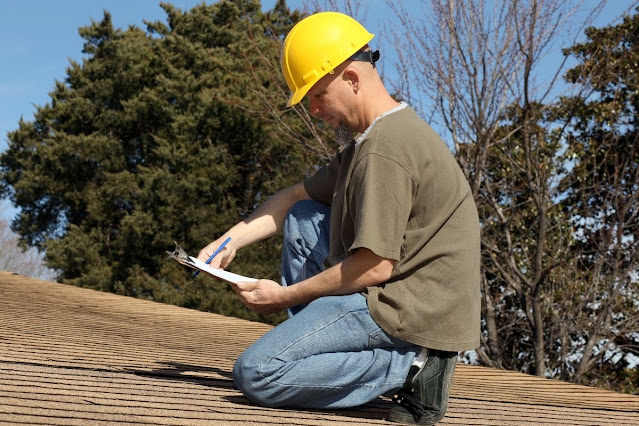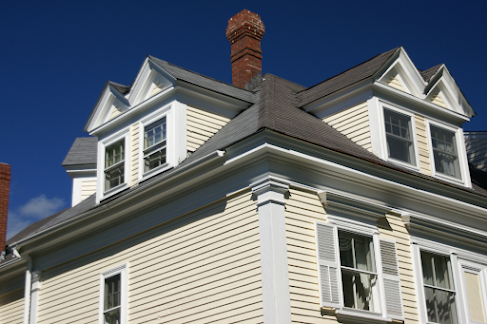House Siding Types: A Comprehensive Guide to Choosing the Right Option for Your Home
Introduction
When it comes to protecting your home and enhancing its curb appeal, choosing the right siding is crucial. The exterior siding of your house not only defines its aesthetic appeal but also acts as a barrier against harsh weather conditions, insulates the interior, and adds to the overall property value. In this comprehensive guide, we’ll dive into the different types of house siding, exploring their features, benefits, and potential drawbacks. By the end of this post, you’ll have a better understanding of which siding material might be the best fit for your home.
1. Vinyl Siding
What is Vinyl Siding?
Vinyl siding is one of the most popular and widely used house siding types in the United States. Made from polyvinyl chloride (PVC), it is known for its durability, low maintenance, and affordability.
Pros of Vinyl Siding
- Cost-Effective: Vinyl siding is relatively inexpensive compared to other siding options, making it a popular choice for homeowners on a budget.
- Low Maintenance: Unlike wood, vinyl does not require painting or staining. A simple wash with soap and water keeps it looking new.
- Variety of Styles and Colors: Available in a wide range of colors and textures, vinyl siding can mimic the look of wood, stone, and even brick.
- Durability: Vinyl is resistant to moisture, pests, and rot, making it suitable for various climates.
Cons of Vinyl Siding
- Limited Insulation: Standard vinyl siding offers little insulation on its own, though insulated vinyl options are available at a higher cost.
- Potential for Warping: In extreme temperatures, vinyl can warp or crack.
- Environmental Impact: Vinyl is made from PVC, which is not biodegradable and can release harmful chemicals when burned.
2. Wood Siding
What is Wood Siding?
Wood siding is a classic and timeless choice that adds natural beauty to any home. Common types of wood siding include cedar, pine, spruce, and redwood.
Pros of Wood Siding
- Natural Aesthetic: Wood offers a warm, natural look that enhances the charm and character of a home.
- Variety of Styles: Available in various styles such as shingles, shakes, clapboard, and board-and-batten, wood siding can be customized to suit different architectural designs.
- Eco-Friendly: Wood is a renewable resource and, if sourced responsibly, is an environmentally friendly siding option.
- Insulation: Wood provides better natural insulation compared to vinyl.
Cons of Wood Siding
- High Maintenance: Wood siding requires regular painting or staining to protect against moisture, insects, and rot.
- Cost: Wood can be expensive, especially high-quality options like cedar and redwood.
- Susceptibility to Damage: Wood is vulnerable to termites, woodpeckers, and other pests, as well as weather-related damage like warping and splitting.
3. Fiber Cement Siding
What is Fiber Cement Siding?
Fiber cement siding is made from a mixture of cement, sand, and cellulose fibers. It is designed to mimic the appearance of wood, stone, or brick while providing enhanced durability and low maintenance.
Pros of Fiber Cement Siding
- Durability: Resistant to rot, pests, fire, and harsh weather conditions, fiber cement siding is one of the most durable options available.
- Low Maintenance: Unlike wood, fiber cement does not require frequent painting or staining. It can be painted, but the paint tends to last longer.
- Versatility: Available in a variety of styles and textures, it can replicate the look of wood, stucco, or stone.
- Fire-Resistant: Fiber cement is non-combustible, providing added protection against fire.
Cons of Fiber Cement Siding
- Cost: Fiber cement siding is more expensive than vinyl and some types of wood siding.
- Installation: It is heavy and requires professional installation, adding to the overall cost.
- Limited Insulation: Like vinyl, fiber cement provides limited insulation, so additional insulation may be necessary.
4. Metal Siding
What is Metal Siding?
Metal siding, often made from aluminum or steel, offers a sleek, modern appearance and is known for its durability and low maintenance.
Pros of Metal Siding
- Durability: Metal siding is resistant to rot, pests, and fire. It can withstand harsh weather conditions, including high winds and heavy rain.
- Low Maintenance: It requires minimal upkeep and does not need painting or staining.
- Recyclable: Metal siding is eco-friendly as it can be recycled at the end of its life.
- Variety: Available in various colors and finishes, metal siding can be customized to achieve different looks, from modern to rustic.
Cons of Metal Siding
- Cost: Metal siding can be more expensive than vinyl and requires professional installation.
- Dents and Scratches: Metal can dent or scratch more easily than other materials, especially in areas prone to hail or debris.
- Insulation: Metal siding has limited insulation properties, so additional insulation may be required for energy efficiency.
5. Brick Siding
What is Brick Siding?
Brick siding provides a classic, timeless look and is known for its durability and low maintenance. It is made from fired clay and comes in a variety of colors and textures.
Pros of Brick Siding
- Durability: Brick is highly durable and can last for decades with minimal maintenance. It is resistant to fire, weather, and pests.
- Low Maintenance: Once installed, brick siding requires little upkeep other than occasional cleaning.
- Energy Efficiency: Brick has excellent thermal mass, helping to regulate indoor temperatures and reduce energy costs.
- Aesthetic Appeal: Brick offers a classic, elegant appearance that can increase a home's resale value.
Cons of Brick Siding
- Cost: Brick siding is one of the most expensive options, both in terms of material and installation.
- Weight: The heavy weight of brick requires a strong foundation and may not be suitable for all structures.
- Limited Flexibility: Brick siding offers limited design flexibility compared to other materials like vinyl or wood.
6. Stucco Siding
What is Stucco Siding?
Stucco siding is made from a mixture of cement, sand, lime, and water, applied in multiple layers over a lath base. It is known for its smooth, textured finish and is commonly used in Mediterranean, Spanish, and Southwestern-style homes.
Pros of Stucco Siding
- Aesthetic Appeal: Stucco provides a seamless, textured appearance that can be customized with different colors and finishes.
- Durability: When properly maintained, stucco can last for decades. It is resistant to fire, pests, and harsh weather conditions.
- Energy Efficiency: Stucco has excellent insulating properties, helping to maintain a consistent indoor temperature.
- Low Maintenance: Stucco requires minimal maintenance, such as occasional cleaning and minor repairs.
Cons of Stucco Siding
- Installation: Proper installation is crucial for stucco siding, as incorrect application can lead to cracks and moisture problems.
- Limited Flexibility: Stucco is not suitable for all climates, especially in areas with excessive rainfall or humidity.
- Repair Costs: While durable, stucco can develop cracks over time, and repairs can be costly.
Conclusion
Choosing the right house siding is a significant decision that affects your home's appearance, protection, and value. Each siding type has its own set of advantages and drawbacks, so it's essential to consider factors such as your budget, climate, maintenance preferences, and aesthetic goals. Whether you opt for the affordability of vinyl, the natural beauty of wood, the durability of fiber cement, or the timeless appeal of brick, make sure to choose a siding material that aligns with your needs and enhances the overall look and functionality of your home.



Comments
Post a Comment